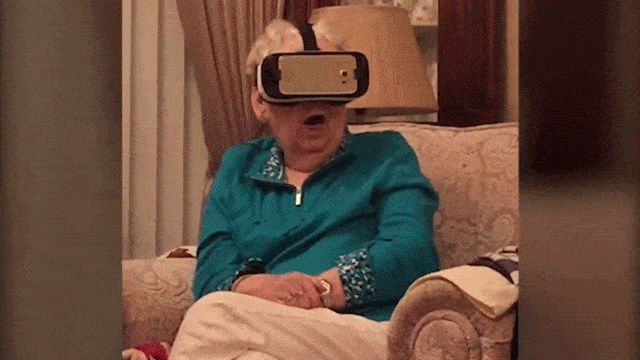
A good friend of mine is a video game artist. About a year ago, he told me that he’d been testing out different virtual reality (VR) headsets at work, in preparation for the advent of mainstream VR gaming. On each headset, he watched a set of short interactive films. But it wasn’t that he was passively watching, he told me – rather, he was somewhere else, exploring, interacting. Although the characters (human or otherwise) in this environment were clearly computer animations, they felt absolutely real, in a fundamentally different way from any video game or film he’d ever experienced. These were other beings, with a sense of real presence. “More like a dream than anything I’ve ever experienced,” he said, in hushed tones, “and this absolutely changes everything.”
My friend is a skeptic and certainly not prone to hyperbole – I don’t ever recall him describing something with this much excitement. So when he says something is a big deal, it’s worth noting. These first encounters with VR (or MR, a related emerging medium) are happening frequently in 2016: people describe their low expectations beforehand, and afterwards express astonishment over how real the experience felt. VR experiences are already so convincing (and they’ll continue to get more realistic) that they quickly become physically and emotionally overwhelming. Users must take frequent breaks, and motion sickness is common.
Clearly VR will have a huge impact. How should we prepare for it? Here are a few practical observations for those, like our team at 2A, whose jobs involve storytelling:
- Keep current on VR. The rise of the internet snuck up on many of us. The rise of VR will be a bigger deal. Don’t dismiss this as a niche field for sci fi hobbyists. Film festivals set the course for mainstream cinema, and this year VR was featured at the Tribeca Film Festival and in the Seattle International Film Festival, among other events.
- Try it out. You don’t need to spend thousands of dollars on an Oculus Rift. For $15, Google Cardboard provides VR experiences that, while bare-bones, are still surprisingly compelling.
- Understand the landscape. A VR/MR ecosystem is already forming. Get familiarized with the current state of the landscape. Where are the gaps? Think back to the rise of the web; there are lots of opportunities here for entrepreneurs and established businesses alike.
- Get creative. A number of full-fledged VR ads have been produced over the past year, among them an immersive VR journey to a Patrón distillery. Develop a shortlist of ideas for how your organization could tell its story better through a format that lets others see and feel things from your perspective.
- Consider guiding principles. Much has been said about the potential for VR to inspire empathy. However, more troubling possibilities also exist, such as the potential for addiction. As VR experiences pack an increasingly visceral punch, what are the ethical implications?
In the late 2020s, my one-year old son will be a teenager, and VR/MR technology will, in one way or another, play a role in his life. It’s fascinating to imagine what this will look like, and we know one thing for sure: we’ll all play a role in this story.

